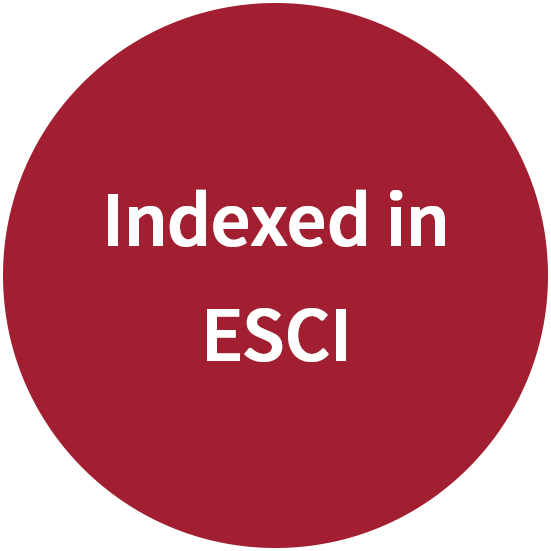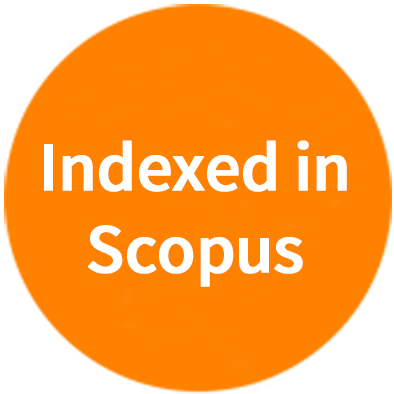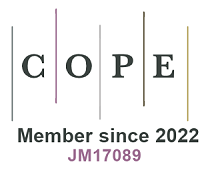REFERENCES
1. Rath A, Salamon V, Peixoto S, et al. A systematic literature review of evidence-based clinical practice for rare diseases: what are the perceived and real barriers for improving the evidence and how can they be overcome? Trials. 2017;18:556.
2. Ren Q, Wang J. Network established to collaborate on diagnosis and treatment of rare diseases in China: a strategic alliance backed by tiered healthcare is the key to the future. Intractable Rare Dis Res. 2019;8:78-9.
3. Tumiene B, Graessner H, Mathijssen IM, et al. European Reference Networks: challenges and opportunities. J Community Genet. 2021;12:217-29.
4. Vos JR, Giepmans L, Röhl C, Geverink N, Hoogerbrugge N. Boosting care and knowledge about hereditary cancer: european reference network on genetic tumour risk syndromes (ERN GENTURIS). Fam Cancer. 2019;18:281-4.
5. Adachi T, Kawamura K, Furusawa Y, et al. Japan’s initiative on rare and undiagnosed diseases (IRUD): towards an end to the diagnostic odyssey. Eur J Hum Genet. 2017;25:1025-8.
6. Gahl WA, Wise AL, Ashley EA. The undiagnosed diseases network of the national institutes of health: a national extension. JAMA. 2015;314:1797-8.
7. Gahl WA, Mulvihill JJ, Toro C, et al. UDN. The NIH undiagnosed diseases program and network: applications to modern medicine. Mol Genet Metab. 2016;117:393-400.
8. Ramoni RB, Mulvihill JJ, Adams DR, et al. Undiagnosed Diseases Network. The undiagnosed diseases network: accelerating discovery about health and disease. Am J Hum Genet. 2017;100:185-92.
9. Splinter K, Adams DR, Bacino CA, et al. Undiagnosed Diseases Network. Effect of genetic diagnosis on patients with previously undiagnosed disease. N Engl J Med. 2018;379:2131-9.
10. Taruscio D, Groft SC, Cederroth H, et al. Undiagnosed diseases network international (UDNI): white paper for global actions to meet patient needs. Mol Genet Metab. 2015;116:223-5.
11. Taruscio D, Baynam G, Cederroth H, et al. The Undiagnosed Diseases Network International: Five years and more! Mol Genet Metab. 2020;129:243-54.
12. Gahl WA, Markello TC, Toro C, et al. The National Institutes of Health Undiagnosed Diseases Program: insights into rare diseases. Genet Med. 2012;14:51-9.
13. Gahl WA, Tifft CJ. The NIH undiagnosed diseases program: lessons learned. JAMA. 2011;305:1904-5.
14. Gahl WA, Boerkoel CF, Boehm M. The NIH undiagnosed diseases program: bonding scientists and clinicians. Dis Model Mech. 2012;5:3-5.
15. Dawkins HJS, Draghia-Akli R, Lasko P, et al. International Rare Diseases Research Consortium (IRDiRC). Progress in rare diseases research 2010-2016: an IRDiRC perspective. Clin Transl Sci. 2018;11:11-20.
16. Supper I, Catala O, Lustman M, et al. Interprofessional collaboration in primary health care: a review of facilitators and barriers perceived by involved actors. J Public Health (Oxf). 2015;37:716-27.
17. Pawson R, Tilley N. Realistic evaluation. Sage Publications; 1997. Available from: https://psycnet.apa.org/record/1997-36931-000 [Last accessed on 6 Apr 2022].
18. Firn J, Preston N, Walshe C. What are the views of hospital-based generalist palliative care professionals on what facilitates or hinders collaboration with in-patient specialist palliative care teams? Palliat Med. 2016;30:240-56.
19. Barnett S, Jones SC, Bennett S, Iverson D, Bonney A. General practice training and virtual communities of practice - a review of the literature. BMC Fam Pract. 2012;13:87.
20. Bardet JD, Vo TH, Bedouch P, Allenet B. Physicians and community pharmacists collaboration in primary care: a review of specific models. Res Social Adm Pharm. 2015;11:602-22.
21. Bookey-Bassett S, Markle-Reid M, Mckey CA, Akhtar-Danesh N. Understanding interprofessional collaboration in the context of chronic disease management for older adults living in communities: a concept analysis. J Adv Nurs. 2017;73:71-84.
22. Laverty H, Meulien P. The innovative medicines initiative -10 years of public-private collaboration. Front Med (Lausanne). 2019;6:275.
23. Lemetti T, Stolt M, Rickard N, Suhonen R. Collaboration between hospital and primary care nurses: a literature review. Int Nurs Rev. 2015;62:248-66.
24. Rumping S, Boendermaker L, de Ruyter DJ. Stimulating interdisciplinary collaboration among youth social workers: a scoping review. Health Soc Care Community. 2019;27:293-305.
25. Halonen JI, Atkins S, Hakulinen H, Pesonen S, Uitti J. Collaboration between employers and occupational health service providers: a systematic review of key characteristics. BMC Public Health. 2017;17:22.
26. Cooper M, Evans Y, Pybis J. Interagency collaboration in children and young people’s mental health: a systematic review of outcomes, facilitating factors and inhibiting factors. Child Care Health Dev. 2016;42:325-42.
27. Kabrhel C. Achieving multidisciplinary collaboration for the creation of a pulmonary embolism response team: creating a “Team of Rivals”. Semin Intervent Radiol. 2017;34:16-24.
28. Kleijnen S, Toenders W, de Groot F, et al. European collaboration on relative effectiveness assessments: what is needed to be successful? Health Policy. 2015;119:569-76.
29. McLoughlin C, Patel KD, O’Callaghan T, Reeves S. The use of virtual communities of practice to improve interprofessional collaboration and education: findings from an integrated review. J Interprof Care. 2018;32:136-42.
30. Fung-Kee-Fung M, Watters J, Crossley C, et al. Regional collaborations as a tool for quality improvements in surgery: a systematic review of the literature. Ann Surg. 2009;249:565-72.
31. Conklin J, Lusk E, Harris M, Stolee P. Knowledge brokers in a knowledge network: the case of seniors health research transfer network knowledge brokers. Implement Sci. 2013;8:7.
32. Li LC, Grimshaw JM, Nielsen C, et al. Use of communities of practice in business and health care sectors: a systematic review. Implement Sci. 2009;4:27.
33. McInnes S, Peters K, Bonney A, Halcomb E. An integrative review of facilitators and barriers influencing collaboration and teamwork between general practitioners and nurses working in general practice. J Adv Nurs. 2015;71:1973-85.
34. Son D, Kawamura K, Nakashima M, Utsumi M. The pharmacist-physician collaboration for IPW: from physician’s perspective. Yakugaku Zasshi. 2015;135:109-15.
35. Eikey EV, Reddy MC, Kuziemsky CE. Examining the role of collaboration in studies of health information technologies in biomedical informatics: A systematic review of 25 years of research. J Biomed Inform. 2015;57:263-77.
36. House S, Havens D. Nurses’ and physicians’ perceptions of nurse-physician collaboration: a systematic review. J Nurs Adm. 2017;47:165-71.
37. Karam M, Brault I, Van Durme T, Macq J. Comparing interprofessional and interorganizational collaboration in healthcare: a systematic review of the qualitative research. Int J Nurs Stud. 2018;79:70-83.
38. Dellinger EP. Teamwork and collaboration for prevention of surgical site infections. Surg Infect. 2016;17:198-202.
39. Havyer RD, Nelson DR, Wingo MT, et al. Addressing the interprofessional collaboration competencies of the association of american medical colleges: a systematic review of assessment instruments in undergraduate medical education. Acad Med. 2016;91:865-88.
40. Braithwaite J. Bridging gaps to promote networked care between teams and groups in health delivery systems: a systematic review of non-health literature. BMJ Open. 2015;5:e006567.
41. Mulvale G, Embrett M, Razavi SD. ‘Gearing Up’ to improve interprofessional collaboration in primary care: a systematic review and conceptual framework. BMC Fam Pract. 2016;17:83.
42. Lunden A, Teräs M, Kvist T, Häggman-Laitila A. A systematic review of factors influencing knowledge management and the nurse leaders’ role. J Nurs Manag. 2017;25:407-20.
43. Bollen A, Harrison R, Aslani P, van Haastregt JCM. Factors influencing interprofessional collaboration between community pharmacists and general practitioners-a systematic review. Health Soc Care Community. 2019;27:e189-212.
44. Trier H, Valderas JM, Wensing M, Martin HM, Egebart J. Involving patients in patient safety programmes: a scoping review and consensus procedure by the LINNEAUS collaboration on patient safety in primary care. Eur J Gen Pract. 2015;21 Suppl:56-61.
45. Buske OJ, Girdea M, Dumitriu S, et al. PhenomeCentral: a portal for phenotypic and genotypic matchmaking of patients with rare genetic diseases. Hum Mutat. 2015;36:931-40.
46. Barry M, Kuijer-Siebelink W, Nieuwenhuis L, Scherpbier-de Haan N. Communities of practice: a means to support occupational therapists’ continuing professional development. A literature review. Aust Occup Ther J. 2017;64:185-93.
47. Braithwaite J. Between-group behaviour in health care: gaps, edges, boundaries, disconnections, weak ties, spaces and holes. A systematic review. BMC Health Serv Res. 2010;10:330.
48. Leutz WN. Five laws for integrating medical and social services: lessons from the United States and the United Kingdom. Milbank Q. 1999;77:77-110, iv.
49. Heip T, Van Hecke A, Malfait S, Van Biesen W, Eeckloo K. The effects of interdisciplinary bedside rounds on patient centeredness, quality of care, and team collaboration: a systematic review. J Patient Saf. 2022;18:e40-4.
50. Mahdizadeh M, Heydari A, Karimi Moonaghi H. Clinical interdisciplinary collaboration models and frameworks from similarities to differences: a systematic review. Glob J Health Sci. 2015;7:170-80.
51. Stolp S, Bottorff JL, Seaton CL, et al. Measurement and evaluation practices of factors that contribute to effective health promotion collaboration functioning: A scoping review. Eval Program Plann. 2017;61:38-44.








